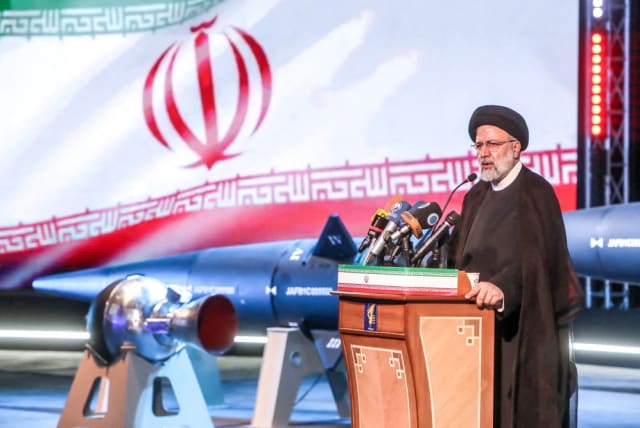Iran wants hypersonic missiles to reach Israel, eastern Europe - analysis

Iran is clearly trying to show off that it now has a missile that can threaten the whole Middle East, and likely reach Europe.
Iran has claimed over the past few days that it wants to increase the range of its Fattah “hypersonic” missile to 2,000 kilometers, which would theoretically enable it to threaten Israel and Eastern Europe.
Amir Ali Hajizadeh, commander of the Islamic Revolutionary Guard Corps’ Aerospace Force, made the comments at a ceremony this week. While the claims were buried at the end of his speech, Iranian pro-government media highlighted them, meaning that Iran is sending a message: It will attempt to increase the range of a missile that so far remains unproven.
Iran has been talking up “hypersonic” weapons this month. Iran wants to join the exclusive club of countries that claim to use these types of missiles. Hypersonic missiles are those that travel above Mach 5.
“Hypersonic speed is considered anything faster than Mach 5, or five times the speed of sound, equivalent to just over 100 kilometers (60 miles) per minute or about a mile every second,” DW noted in an article about these types of weapons.
Are Iran's missiles more advanced than China's?
China has developed a hypersonic missile that can glide through the air, whereas the Iranian version is supposed to fly beyond the atmosphere, like a ballistic missile, and then launch a re-entry vehicle that has its own power and returns to the atmosphere, plunging to earth at high speeds. The Iranian concept is supposed to be able to maneuver as it returns to earth.
Hypersonic missiles are a threat because of their speed and maneuverability. Because they can glide and come at a low trajectory, they may operate like a cruise missile and be able to attack targets flying at high speeds and appearing out of a valley or from the sea, in areas where radar may have a harder time detecting them.
When they are detected an air and missile defense system may not be able to launch in time to stop the threat. However, much of this remains unproven.
China hasn’t fought a war with a country in which it can prove its missiles work. Russia claims to use an air-launched missile, called Kinzhal but this system has been intercepted and therefore it does not live up to expectations.
In addition Iran’s concept is not proven. Iran has rolled out an example of the missile and has put out a video showing it being launched. It is not clear if the re-entry vehicle actually works.
Both the systems are solid fueled and borrow from Iran’s extensive history of missile development and the creation of missiles capable of sending satellites to space. Iran is clearly an advanced county in missile production.
Missiles could reach Europe
It is not clear if its new missile will be tested and whether it can reach the Mediterranean. However, Iran is clearly trying to show off that it now has a missile that can threaten the whole Middle East, and likely reach Europe. If Iran moved this missile to Iraq or Syria, among its partner forces in both countries, it could reach Europe. If it provided the missile to Russia it could also reach Europe.
Hajizadeh is Iran’s leading missile man, the key leader behind the missile programs and threats to Israel, the US and the region. He said recently, according to the reports that "for progress in the country, we should not look outside. Power generation in the IRGC happens daily.”
He also praised new ties between Saudi Arabia and Iran. He said that Iran’s president is personally invested in the success of the Fattah hypersonic missile. The Iranian missile project leader remarked on how they had to develop the hypersonic missile last year amid protests. This shows that the internal problems in Iran may have affected the success of this project.
The main point of Hajizadeh’s discussion was that Iran has achieved all of its goals in terms of indigenous production of complex systems, such as missiles. The hypersonic project is just one project among many. It wants better satellites and it wants to build more drones.
Jerusalem Post Store
`; document.getElementById("linkPremium").innerHTML = cont; var divWithLink = document.getElementById("premium-link"); if (divWithLink !== null && divWithLink !== 'undefined') { divWithLink.style.border = "solid 1px #cb0f3e"; divWithLink.style.textAlign = "center"; divWithLink.style.marginBottom = "15px"; divWithLink.style.marginTop = "15px"; divWithLink.style.width = "100%"; divWithLink.style.backgroundColor = "#122952"; divWithLink.style.color = "#ffffff"; divWithLink.style.lineHeight = "1.5"; } } (function (v, i) { });

